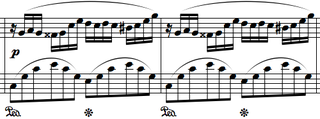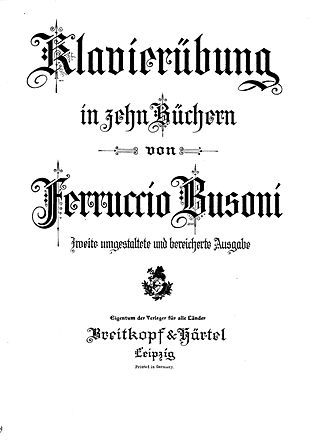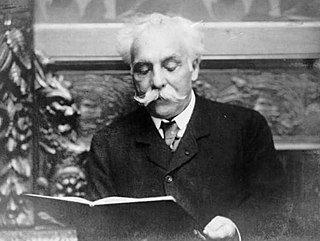Suite bergamasque is a piano suite by Claude Debussy. He began composing it around 1890, at the age of 28, but significantly revised it just before its 1905 publication. The popularity of the third movement, Clair de lune, has made it one of the composer's most famous works for piano, as well as one of the most famous musical pieces of all time.

Frédéric Chopin's Fantaisie-Impromptu in C♯ minor, Op. posth. 66, WN 46 is a solo piano composition. It was composed in 1834 and published posthumously in 1855 despite Chopin's instruction that none of his unpublished manuscripts be published. The Fantaisie-Impromptu is one of Chopin's most frequently performed and popular compositions.
Papillons, Op. 2, is a suite of piano pieces written in 1831 by Robert Schumann when he was 21 years old. The work is meant to represent a masked ball and was inspired by Jean Paul's novel Flegeljahre.

Piano Concerto No. 2 in F major, Op. 102, by Dmitri Shostakovich was composed in 1957 for the 19th birthday of his son Maxim, who premiered the piece during his graduation concert at the Moscow Conservatory. It contains many similar elements to Shostakovich's Concertino for Two Pianos: both works were written to be accessible for developing young pianists. It is an uncharacteristically cheerful piece, much more so than most of Shostakovich's works.

Ludwig van Beethoven's Piano Sonata No. 30 in E major, Op. 109, composed in 1820, is the third-to-last of his piano sonatas. In it, after the huge Hammerklavier Sonata, Op. 106, Beethoven returns to a smaller scale and a more intimate character. It is dedicated to Maximiliane Brentano, the daughter of Beethoven's long-standing friend Antonie Brentano, for whom Beethoven had already composed the short Piano Trio in B♭ major WoO 39 in 1812. Musically, the work is characterised by a free and original approach to the traditional sonata form. Its focus is the third movement, a set of variations that interpret its theme in a wide variety of individual ways.

Written in 1917, the Études-Tableaux, Op. 39 is the second set of piano études composed by Sergei Rachmaninoff.

Leonard Bernstein's Symphony No. 2 The Age of Anxiety is a piece for orchestra and solo piano. The piece was composed from 1948 to 1949 in the United States and Israel, and was revised in 1965. It is titled after W. H. Auden's eponymous poem, and dedicated to Serge Koussevitzky.

Out of Doors is a set of five piano solo pieces, Sz. 81, BB 89, written by Béla Bartók in 1926. Out of Doors is among the very few instrumental compositions by Bartók with programmatic titles.

The Klavierübung, by the Italian pianist-composer Ferruccio Busoni, is a compilation of piano exercises and practice pieces, comprising transcriptions of works by other composers and original compositions of his own.
Sergei Prokofiev's Piano Sonata No. 3 in A minor, Op. 28 (1917) is a sonata composed for solo piano, using sketches dating from 1907. Prokofiev gave the première of this in Saint Petersburg on 15 April 1918, during a week-long festival of his music sponsored by the Conservatory.

The French composer Gabriel Fauré (1845–1924) wrote in many genres, including songs, chamber music, orchestral pieces, and choral works. His compositions for piano, written between the 1860s and the 1920s, include some of his best known works.
Alexander Scriabin's 24 Preludes, Op. 11 is a set of preludes composed in the course of eight years between 1888–96, being also one of Scriabin's first published works with M.P. Belaieff in 1897, in Leipzig, Germany, together with his 12 Études, Op. 8 (1894–95).
Music for the Dance No. 2 is a composition for piano by American composer Leonard Bernstein. It was finished in 1938.
Non troppo presto, sometimes alternatively entitled Music for the Dance No. 1, refers to an untitled composition for piano by American composer Leonard Bernstein, written in 1937.
The Piano Sonata, originally entitled Sonata for the Piano, is the only piano sonata by American composer Leonard Bernstein. An early work by the composer, it was finished in 1938.
Touches: Chorale, Eight Variations and Coda, often shortened as Touches, is a composition by American composer Leonard Bernstein. Composed in 1980, it is one of Bernstein's last compositions for solo piano.
Four Sabras is a short composition for solo piano by American composer Leonard Bernstein. Each Sabra refers to vignettes or portraits of different fictitious Israeli children.
Opus Two is an American violin and piano chamber music ensemble featuring violinist William Terwilliger and pianist Andrew Cooperstock. They are known for their contributions to the violin-piano duo repertoire and their performances and recordings of original American music for violin and piano.








